O in Persian Costume
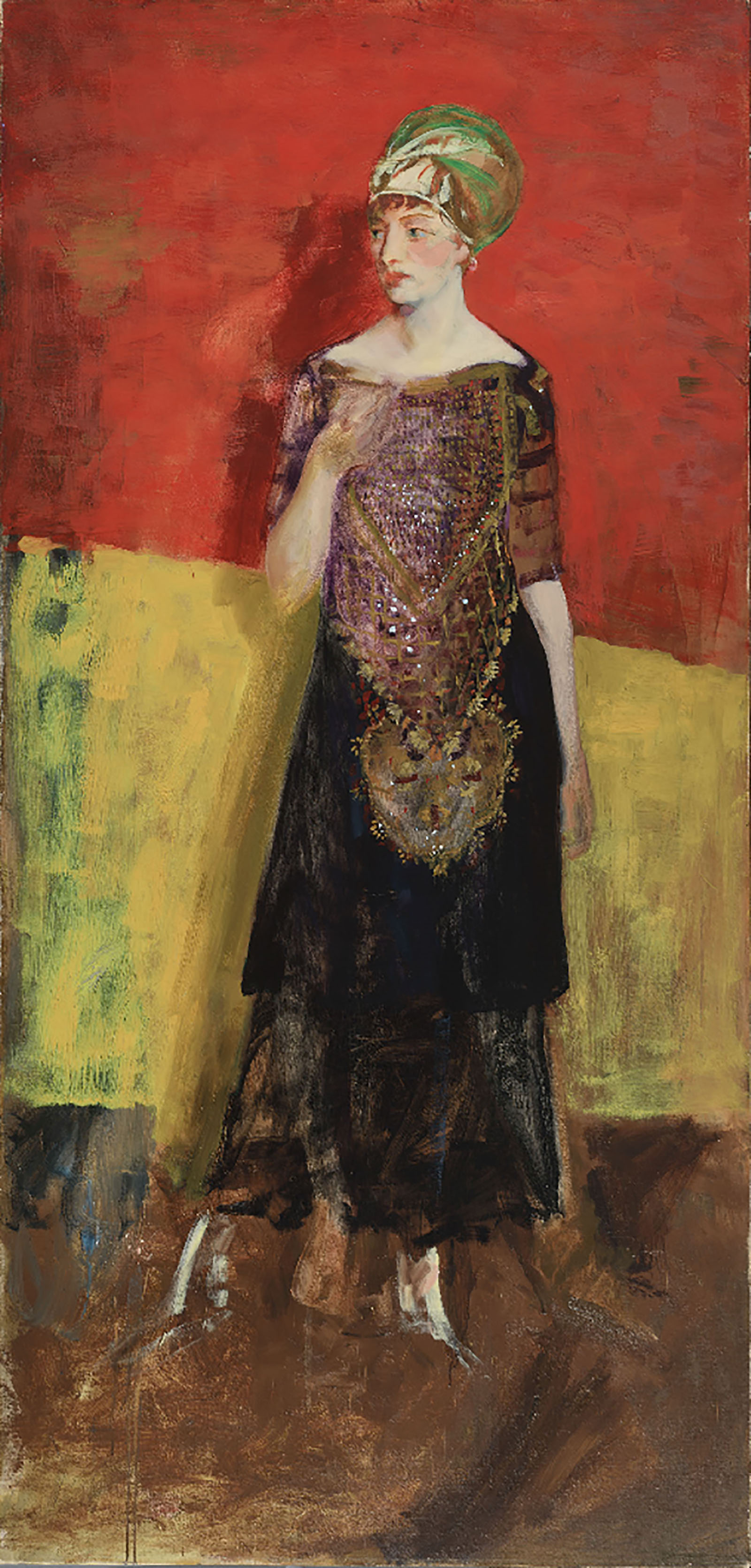
Here the artist’s wife wears a glimmering headdress and tunic laden with beadwork. The sharp color contrasts, variations in texture, and changeable brushwork create a dynamism that seems to describe the subject herself.

Here the artist’s wife wears a glimmering headdress and tunic laden with beadwork. The sharp color contrasts, variations in texture, and changeable brushwork create a dynamism that seems to describe the subject herself.
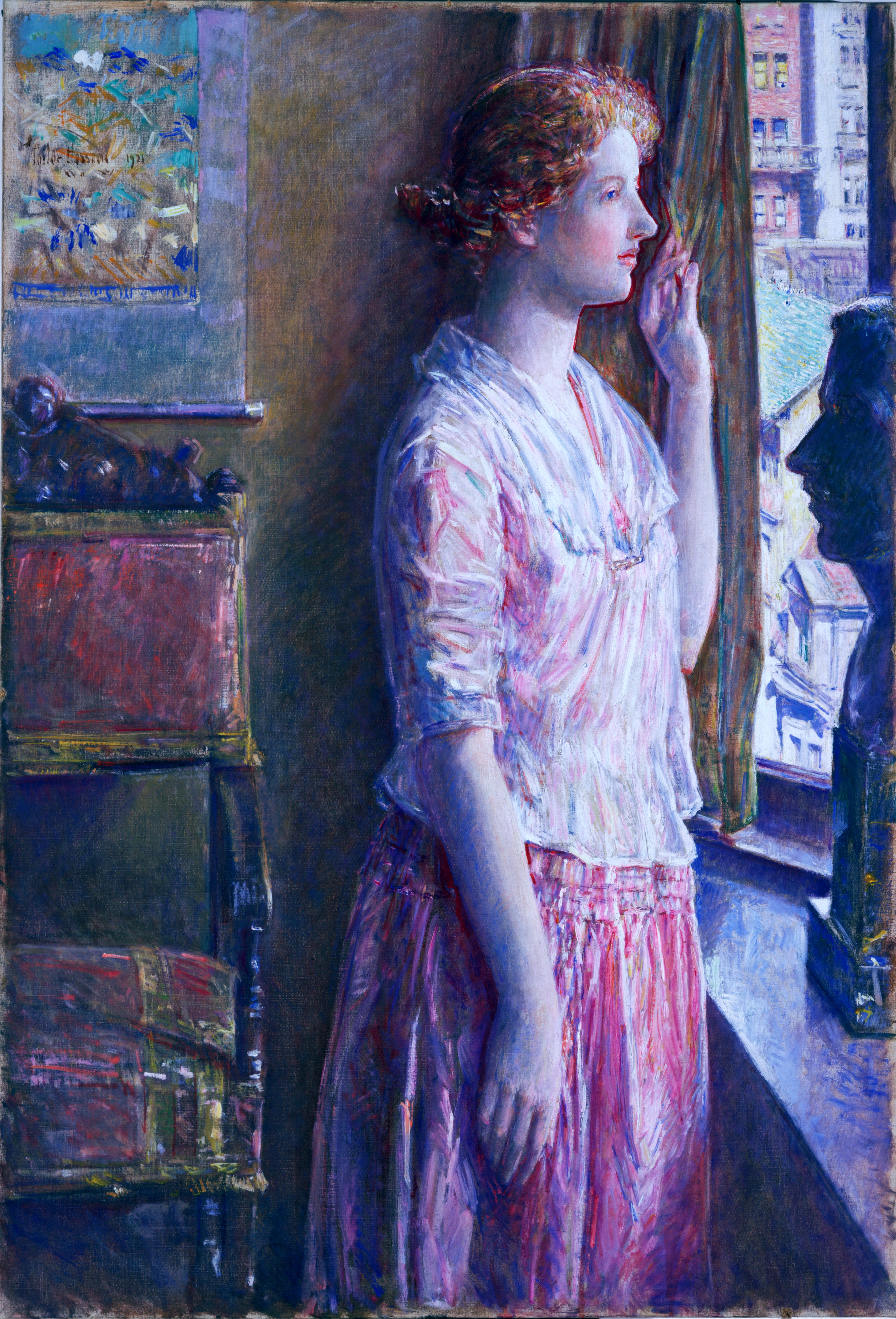
Are cities alienating or energizing?
In 1907 Hassam began his Window series, which render the atmospheric effects of the New York City skyline from within genteel domestic interiors. In each painting of the series, a young woman is shown in a highly decorated apartment filled with art, sculpture, and fine furnishings. The contrast between the small spaces of Hassam’s elegant interiors and the expansiveness of the city symphony outside convey the various (and sometimes opposing) sensations of modern urban life.

Are cities alienating or energizing?
In 1907 Hassam began his Window series, which render the atmospheric effects of the New York City skyline from within genteel domestic interiors. In each painting of the series, a young woman is shown in a highly decorated apartment filled with art, sculpture, and fine furnishings. The contrast between the small spaces of Hassam’s elegant interiors and the expansiveness of the city symphony outside convey the various (and sometimes opposing) sensations of modern urban life.
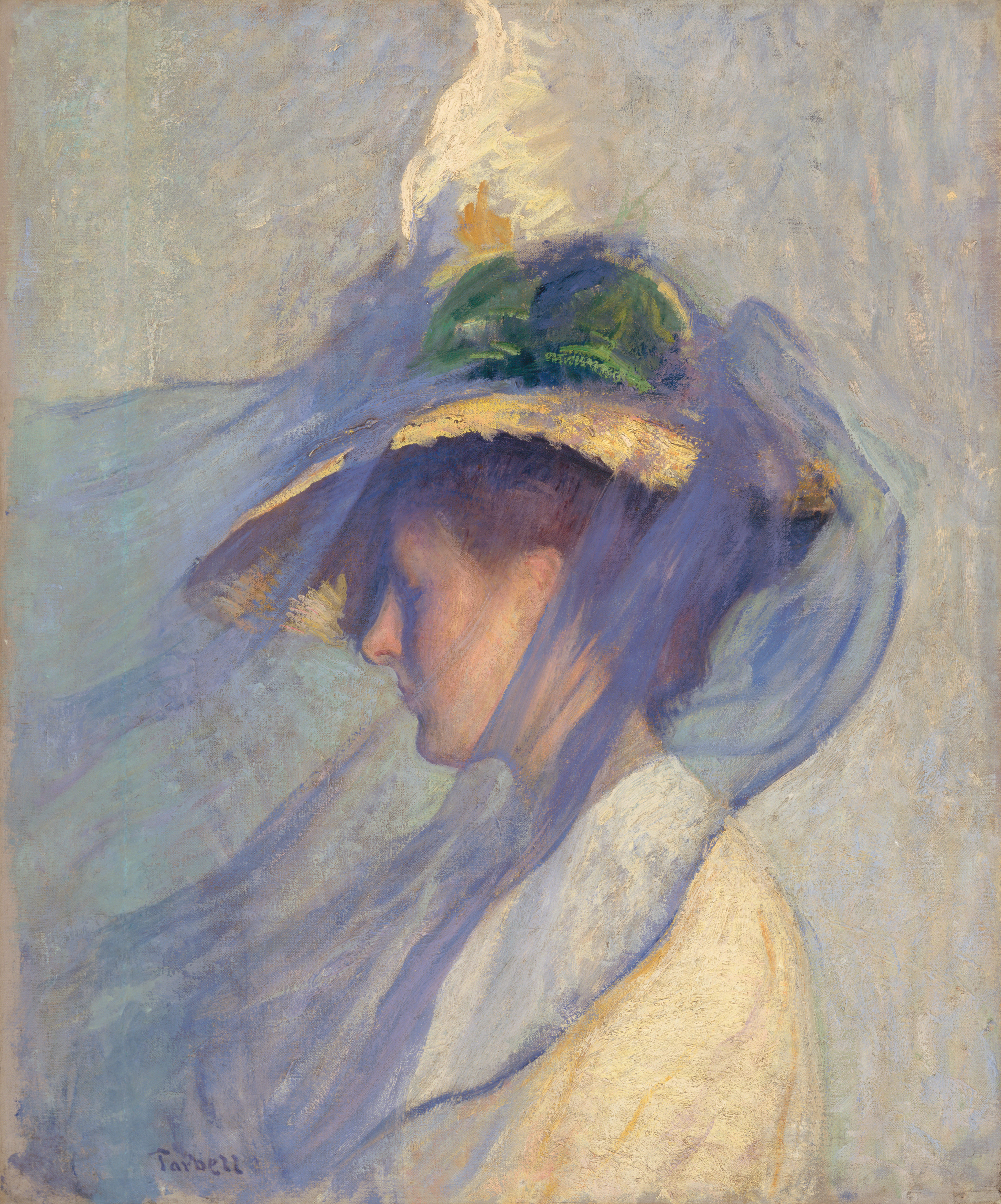
What is the subject of this painting?

What is the subject of this painting?
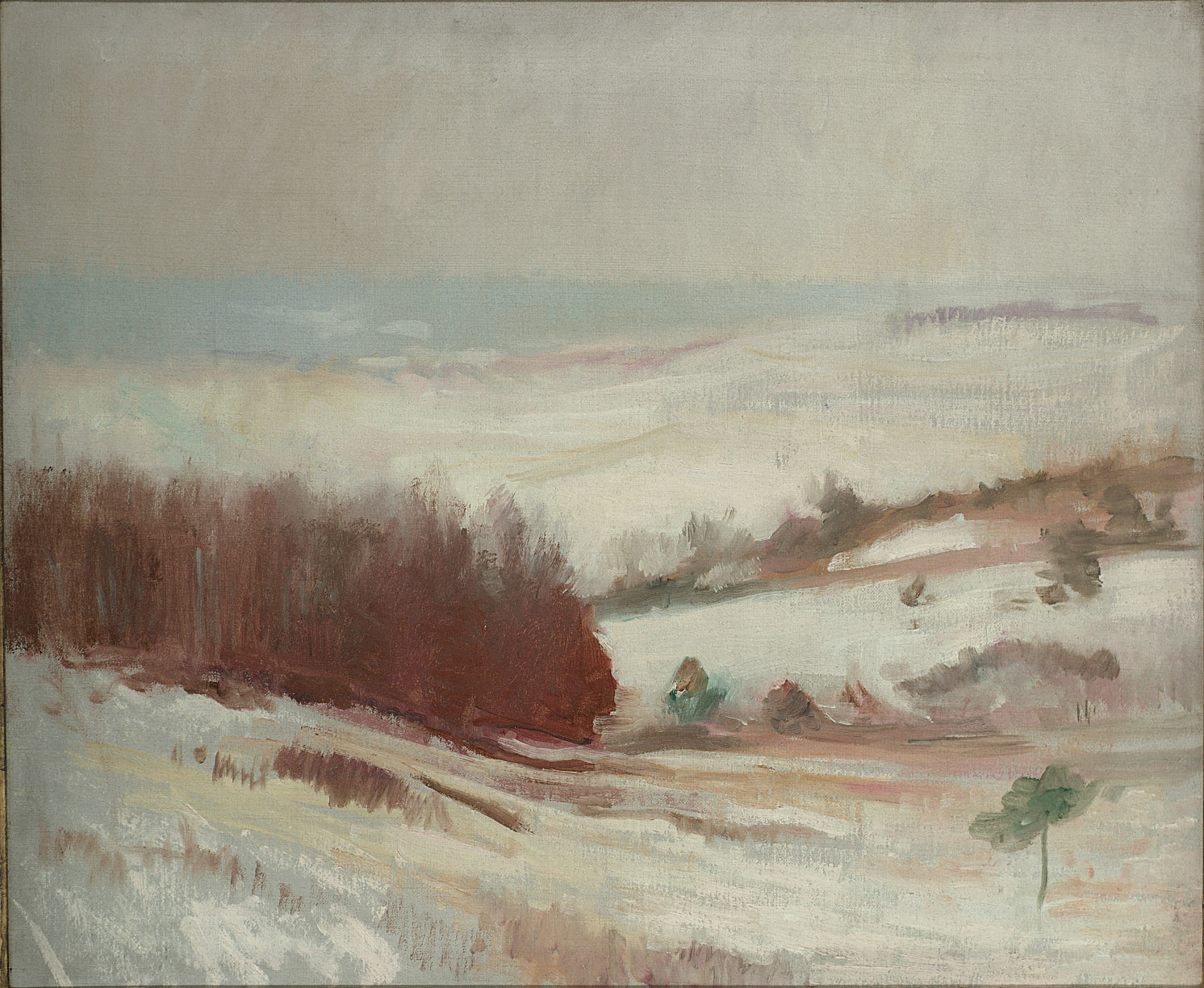
How far can your eye travel in this painting?

How far can your eye travel in this painting?
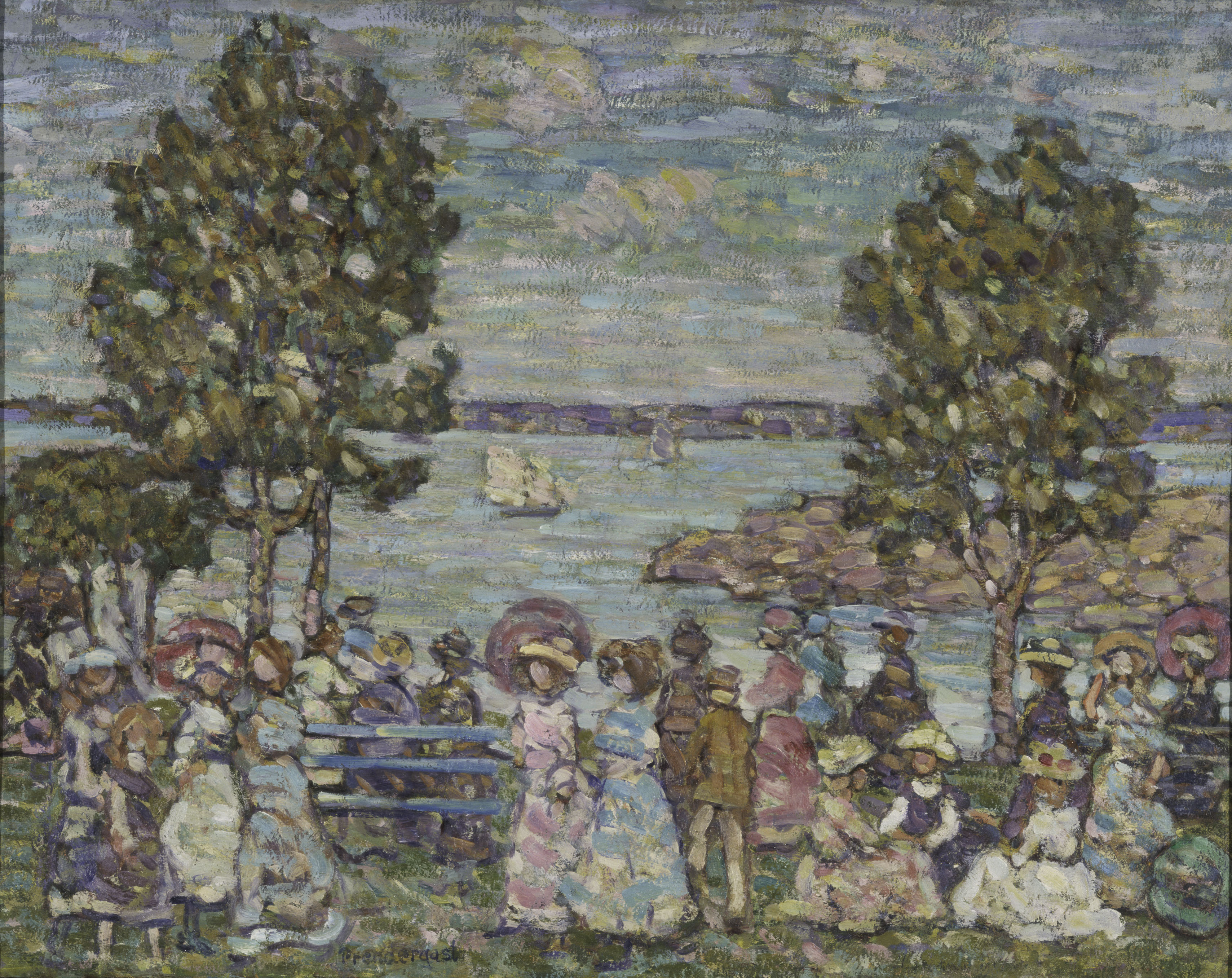
Can an artwork have rhythm?
Prendergast humbly entered the shimmering world of 19th-century Parisian art by working on a cattle boat for his passage to Europe in 1884. The young artist stayed for three years, absorbing the influence of Impressionism, which led him to use color to emphasize form and rhythm in an intensely personal mode of expression. In The Holiday, Prendergast painted a tapestrylike scene, outlining figures, trees, and water in lively, dancing brushstrokes.

Can an artwork have rhythm?
Prendergast humbly entered the shimmering world of 19th-century Parisian art by working on a cattle boat for his passage to Europe in 1884. The young artist stayed for three years, absorbing the influence of Impressionism, which led him to use color to emphasize form and rhythm in an intensely personal mode of expression. In The Holiday, Prendergast painted a tapestrylike scene, outlining figures, trees, and water in lively, dancing brushstrokes.
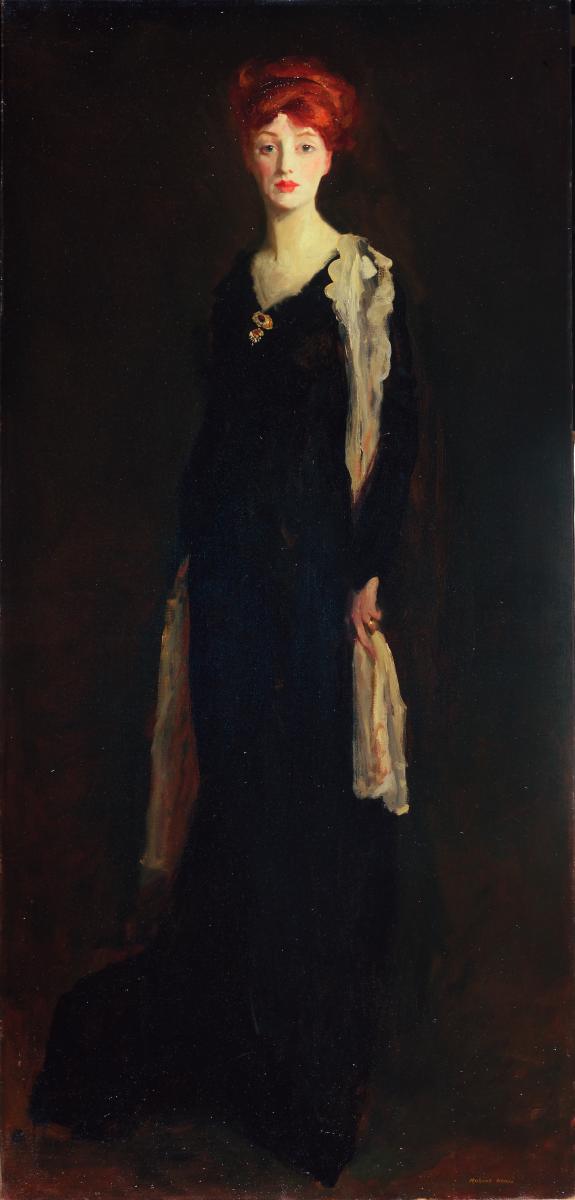
Can a portrait capture someone’s mind?
When this portrait was painted, Marjorie Organ Henri had been married to the artist for less than two years. “O,” as Henri called her, was a successful cartoonist for the New York Journal, and her caricatures appeared regularly in print. This portrait challenged the conventions of society portraiture; posing her against a dark background, the artist’s psychological realism presents her as independent, confident, and self-possessed—the very model of the period’s “New Woman.”